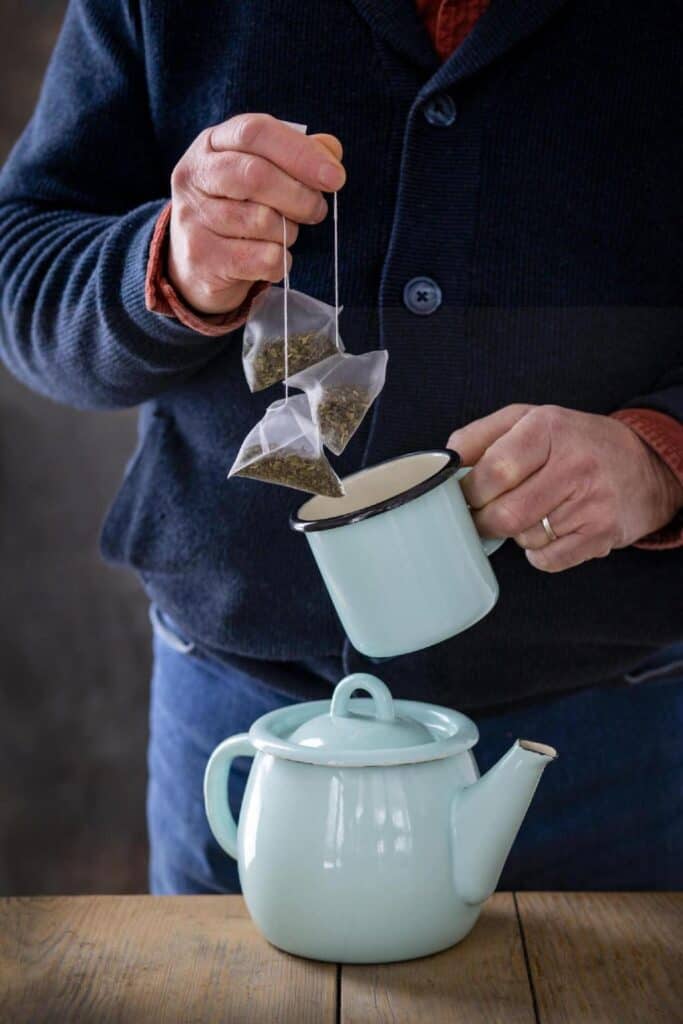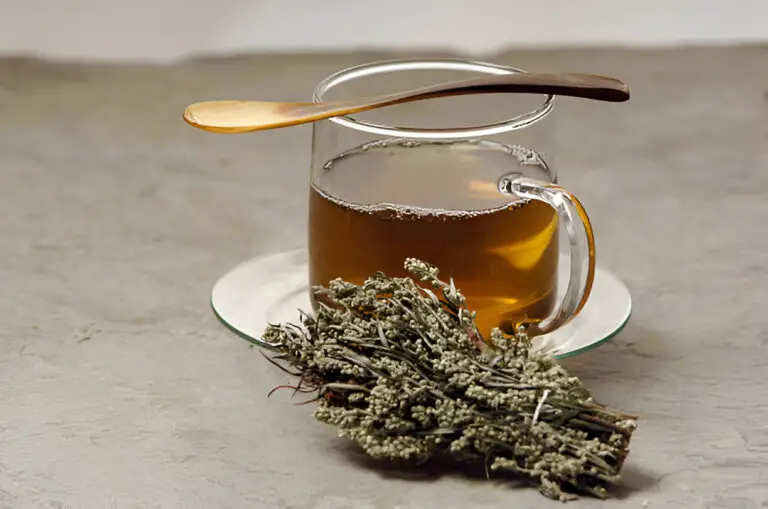Can Reusing Tea Bags Really Reduce Caffeine Levels?

If you like tea and want to enjoy every last drop, or if you care about your health and want to better control your caffeine intake, this guide is for you. Reusing tea bags is an old habit that has caught the attention of both tea lovers and health food fans. But here’s the interesting twist: could this seemingly frugal habit actually help lower the amount of caffeine in your tea?
Imagine the aroma of freshly brewed tea wafting through your kitchen. This time, it’s not just about indulging in comforting warmth. It’s also about unraveling the secrets hidden within reused tea bags.
A new study investigates if this practice lowers caffeine levels in later infusions. This could alter how we view teatime rituals. Let’s find out if reusing tea bags is a smart way to monitor daily caffeine intake.
Understanding Caffeine Levels in Tea
Different types of tea contain varying levels of caffeine. For example, black tea generally has the highest caffeine content per cup compared to green or white tea. Herbal teas, on the other hand, are typically caffeine-free unless they contain ingredients like yerba mate or guayusa. Tea drinkers can make informed choices by understanding caffeine variations.
There are several factors that can affect the amount of caffeine in brewed tea. The longer a tea is steeped, the more caffeine it will extract from the leaves. Additionally, water temperature plays a role; hotter water tends to extract more caffeine compared to cooler water.
Moreover, if one chooses to reuse a tea bag for multiple infusions, each subsequent brew will likely contain less caffeine than the initial cup due to decreasing extraction efficiency.
The process of reusing tea bags can have a noticeable impact on the extraction and retention of caffeine in subsequent brews. Steeping a tea bag multiple times, especially with black or green tea high in caffeine, gradually reduces caffeine in each cup.
Caffeine molecules in tea leaves are mostly extracted during the first infusion. Diminishing returns happen with each subsequent use.
| Check out: How Many Tea Bags Do I Need for a Teapot to Make Tea? |
Can Reusing Tea Bags Really Reduce Caffeine Levels?

Reusing tea bags can indeed reduce the caffeine levels in subsequent brews, but the extent of this reduction is not significant. Reusing tea bags can result in a decrease of about 10–20 mg of caffeine over three cups compared to using loose tea leaves.
This reduction is not substantial and may not be noticeable for many individuals. Reusing tea bags can reduce waste and promote sustainability. However, it does not change the tea’s caffeine content significantly.
Factors Affecting Caffeine Levels in Reused Tea Bags
Several factors can influence the caffeine content of tea when reusing tea bags:
- Type of Tea: As mentioned earlier, different types of tea contain varying levels of caffeine. Black tea typically has the highest caffeine content, so reusing black tea bags may still result in a relatively high caffeine content compared to other types of tea.
- Number of Steepings: The more times you reuse a tea bag, the lower the caffeine content will be in each subsequent cup. However, the reduction in caffeine levels may not be as significant as some believe.
- Steeping Time: The longer you steep the tea bag, the more caffeine will be extracted. Therefore, shorter steeping times when reusing tea bags may result in lower caffeine levels in the tea.
- Water Temperature: Higher water temperatures can lead to more efficient caffeine extraction. Boiling water for tea is known to extract the most caffeine from it. Using cooler water when reusing tea bags may result in a lower caffeine content in the brewed tea.
Tips for Lowering Caffeine Levels in Tea
When you’re looking to enjoy your tea while cutting back on caffeine, there are a few simple adjustments you can make. One approach is to experiment with shorter steeping times. Tea leaves release more caffeine into the tea the longer they steep. Shortening the steeping time by just one or two minutes can help lower the caffeine level without changing the taste. Also, choosing decaffeinated tea is an easy way to enjoy a cup of tea without having to worry about the caffeine content.
To get the most out of reused tea bags flavor-wise while still keeping caffeine levels relatively low, consider “washing” your tea. This involves quickly rinsing the used bag in cold water before re-steeping it in hot water.
While this method won’t eliminate all remaining caffeine from the bag, it can help reduce it slightly. Moderation is key in consuming caffeinated beverages. Mind your intake for a healthier relationship with tea.
Balancing enjoying your favorite brew and managing caffeine intake doesn’t need to be complex. By implementing these tips and tricks, you can tailor your tea-drinking experience to suit your preferences and lifestyle.
Potential Risks Associated with Reusing Tea Bags
While the idea of reusing tea bags to reduce caffeine levels might sound like a clever trick, it’s essential to be aware of potential risks that extend beyond just managing your caffeine intake.
One significant risk associated with reusing tea bags multiple times is bacterial contamination. As teabags come into contact with water, they provide an ideal environment for bacteria to thrive, especially when left moist or at room temperature for extended periods.
Minimizing Health Risks from Microbial Growth
To minimize health risks from microbial growth when reusing tea bags, it’s crucial to adopt proper storage and handling practices:
- Squeeze Out Excess Moisture: After each use, make sure to squeeze out excess moisture from the tea bag.
- Store in a Dry, Clean Container: Store used tea bags in a dry, clean container. Placing them in a sealed jar or in the refrigerator can help prevent bacterial proliferation.
- Use Within a Reasonable Timeframe: Use tea bags promptly to prevent harmful bacteria growth. Reusing bags may lead to contamination.
Balancing Frugality with Safety Measures
Maintaining hygiene practices is paramount, even when trying to economize by re-brewing tea bags. Proper handling can lower some risks. Remember, a teabag has a maximum number of uses to avoid health risks.
Debunk myths about reusing tea bags. Offer accurate information. Individuals can make informed decisions. Manage caffeine intake without compromising tea enjoyment.
Myth Busting: Common Misconceptions about Reusing Tea Bags
Reusing tea bags is a common practice that many people believe can help reduce caffeine levels and save money. However, there are several misconceptions associated with this practice that need to be addressed.
Debunk myths about reusing tea bags. Provide accurate information. Individuals can make informed decisions. Manage caffeine intake without compromising tea enjoyment.
Fact: Caffeine Extraction Occurs During Steeping
When you steep a tea bag in hot water, the caffeine and other compounds in the tea leaves are extracted into the water. The temperature of the water and the amount of steeping time are two factors that affect this process. When you reuse a tea bag, some of the caffeine that was initially extracted remains in the tea leaves.
Fiction: Reusing Tea Bags Significantly Reduces Caffeine Levels
While it’s true that some caffeine is left in the tea leaves after the initial steeping, the amount that remains is relatively small compared to the original caffeine content. Therefore, reusing a tea bag is unlikely to result in a significant reduction in caffeine levels. Most of the caffeine is extracted during the first steeping, so subsequent steepings will yield tea with lower caffeine content but not to a considerable extent.
Fact: Health Risks Associated with Reusing Tea Bags
Some people believe that reusing tea bags can pose health risks due to bacterial contamination. Used tea bags can harbor bacteria without proper storage. Proper handling minimizes this risk. Squeezing out excess moisture from the tea bag and storing it in a dry, clean container can help prevent bacterial proliferation.
Fiction: Flavor and Aroma
Another misconception is that reusing tea bags compromises the flavor and aroma of the tea. The flavor may weaken in later steepings, but many tea enthusiasts still enjoy it. Experimenting with different steeping times and water temperatures can help enhance the flavor of reused tea bags.
Fiction: Economic Benefits
Some people reuse tea bags to save money, believing that it’s a cost-effective practice. While reusing tea bags can save a small amount of money in the short term, the overall savings are minimal compared to the cost of buying new tea bags. The tea’s quality may decline with each steeping, resulting in a less satisfying experience.
| Also see: Can You Really Boil Cold Brew Tea Bags? |
Conclusion
In conclusion, the practice of reusing tea bags may have a moderate effect on reducing caffeine levels in subsequent brews. Some caffeine content decreases with multiple infusions. However, this may not significantly reduce caffeine for those wanting less.
Tea enthusiasts and health-conscious individuals should consider tea type, brewing methods, and personal preferences to manage their daily caffeine intake effectively.
Making choices about tea should depend on individual needs and taste preferences. Opt for shorter steeping times. Explore decaffeinated options. Reuse tea bags occasionally for flavor. Mindfully balance your caffeine intake.
Readers can adjust their tea-drinking habits based on personal preferences without sacrificing enjoyment or health.






